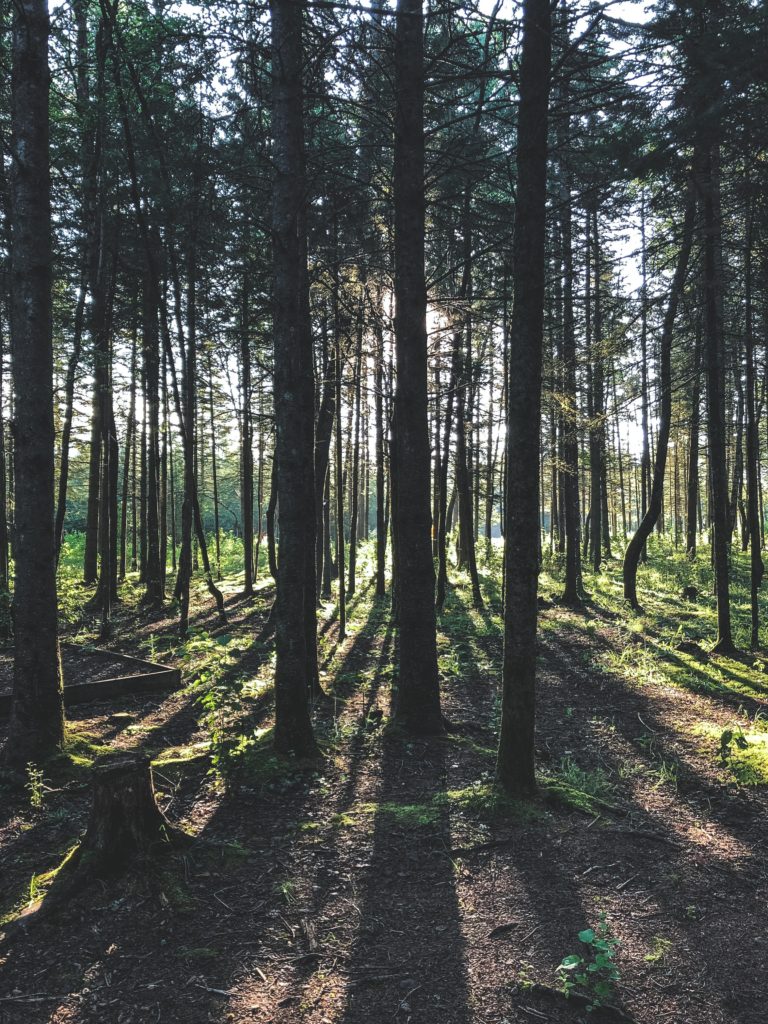by McKenzi Heger | October 22, 2019
Forests are incredibly important systems that provide valuable ecological services to humans and wildlife alike. Unfortunately, these systems are often undervalued, and human activities such as tree clearing, introduction of invasive species, and increased impervious cover can cause serious degradation to forested lands. This degradation can lead to a loss of the ecological functions of an established forest, and can increase soil erosion, disrupt the water cycle, and contribute to climate change through the release of carbon stored in woody biomass.

Forest restoration is the act of rebuilding and maintaining forests to support and accelerate the recovery of degraded forest systems. But forest restoration isn’t just about saving the trees, it’s also about creating ecological uplift, increasing the function of the wide range of ecological services that forests provide, and benefitting humans and wildlife species that rely on functional forested systems to flourish.
Did you know that forests cover more than a third of our country? That’s over 700 million acres! They also store and filter more than half of the nation’s water supply. Their biomass stores large amounts of carbon, and their root systems help to retain soil and groundwater. Forests are an integral component in carbon sequestration, dampening the effects of climate change.
Clearly, forest restoration is a useful process in protecting the natural and manmade landscape, but careful consideration must be taken when determining the best approach to meet restoration goals. Some of the techniques that GreenVest employs when pursuing forest restoration include:
Reforestation
While you might think this technique is as simple as planting trees on a degraded landscape, reforestation is a measured approach that considers much more than just planting trees. Determining the cause of degradation informs the best course of action moving forward to better restore and conserve the land. The landscape position, groundwater table, and soil types must be considered to select the appropriate tree species, planting density, and to meet restoration objectives for replanting.
Invasive Species Management
Invasive species can have harmful effects on native forested systems. This approach involves using adaptive management techniques to reduce non-native and invasive species presence through mechanical removal, herbicide application, and planting with competing native species that can establish and suppress non-native prevalence in a forest ecosystem.
Restoring Historic Groundwater Levels
Restoring degraded land to achieve historic groundwater elevations benefits forested ecosystems by restoring the hydrology that leads to ecological uplift of a degraded forest. Through increases in erosion, stream channels draw down groundwater, increasing the stress to forests as the plant communities root systems search and compete for dwindling groundwater resources. Restoring this hydrology increases forest resiliency, encourages understory development, and restores forested wetland systems that are important carbon storage and water filtration systems.
Forest restoration can provide benefits that extend beyond just the forests. Forest restoration helps enhance food security, improve air and water quality, and, most of all, increase resiliency to climate change. GreenVest’s goal is to challenge the cynics and create value. Our team of professionals offers a diverse array of skills that cross over to many different disciplines to meet our clients’ needs while consistently meeting and exceeding expectations.
To learn more about GreenVest and our projects, contact us.



